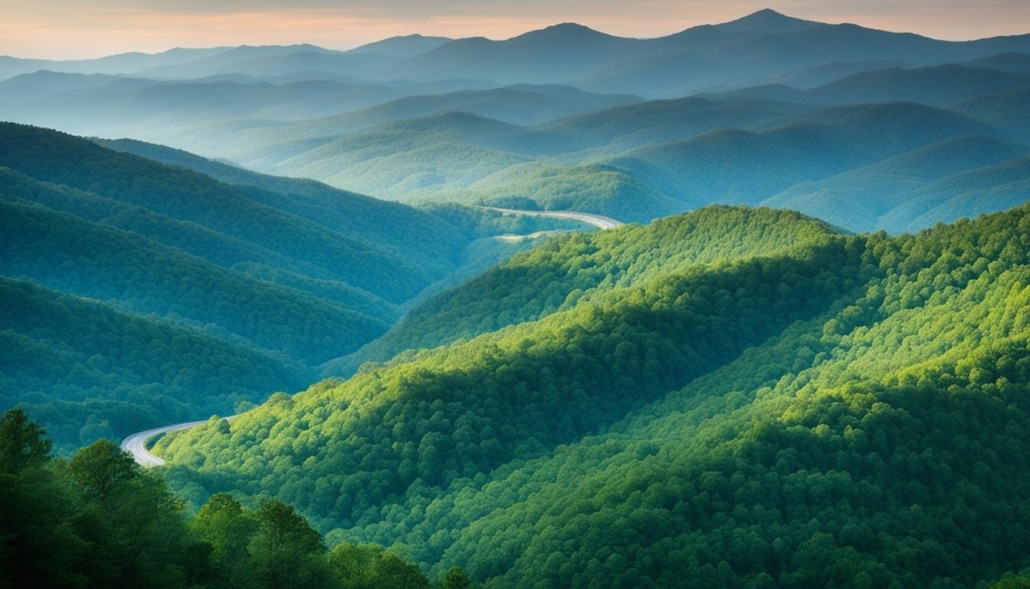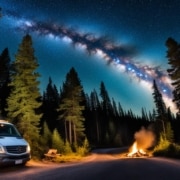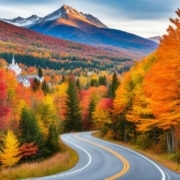Driving the Blue Ridge Parkway: Scenic Stops & Tips
The Blue Ridge Parkway, known for its breathtaking scenic views, winds through the majestic Appalachian Mountains, creating a seamless connection between Shenandoah National Park and Great Smoky Mountains National Park. This iconic route offers travelers a plethora of experiences, from serene road trips and invigorating hikes to exploring historic sites and cultural landmarks.
Whether you’re tackling trails like Stony Man Mountain, marvelling at the historic President Hoover’s Rapidan Camp, or enjoying family-friendly activities along Skyline Drive, the Parkway promises a journey rich in natural beauty and cultural heritage. Discover picturesque stops like Rocky Top Overlook and Humpback Rocks, perfectly embodying the allure of each season’s unique charm.
Introduction to the Blue Ridge Parkway
The Blue Ridge Parkway, often referred to as “America’s Favorite Drive,” is not just a road but a celebration of America’s natural beauty and its legacy of conservation. This 469-mile route serves as a gateway to the Southern Appalachian Mountains, bringing visitors from all over to its scenic overlooks and lush landscapes. Let’s delve deeper into the history, interconnections, and seasonal allure of this iconic journey.
History and Construction
The Blue Ridge Parkway’s history is deeply rooted in the 1930s era of ambition and development. Work began on this monumental project in 1935 as part of President Franklin D. Roosevelt’s New Deal initiatives aimed at stimulating job growth. The parkway was meticulously planned to provide a seamless recreational driving experience through some of the most breathtaking vistas in America. Its final section, the Linn Cove Viaduct, was completed in 1987, marking over five decades of dedicated construction efforts. Each mile constructed was a testament to visionaries who imagined a path that would prominently feature scenic overlooks and pristine nature.
Connecting National Parks
One of the Blue Ridge Parkway’s defining characteristics is its role in linking two of the nation’s most treasured national parks: Shenandoah National Park in Virginia and Great Smoky Mountains National Park in North Carolina. This continuous ribbon not only facilitates an extraordinary recreational driving experience but also fosters an appreciation for the national park system’s role in preserving America’s natural heritage. This pathway meanders through protected lands, serving as a corridor for wildlife and a haven for outdoor enthusiasts.
Seasons and Sceneries
Year-round, the Blue Ridge Parkway offers a dynamic tapestry of seasonal charms, each unique in its allure. Spring awakens with a flourish of rhododendron blooms, painting the landscape in vibrant hues. Summer casts a lush, green canopy over the drive, providing cool respite and verdant beauty. Autumn is arguably the most celebrated season along the parkway, drawing visitors eager to witness its radiant fall foliage. Even in winter, the soft blanket of snow highlights a different aspect of the parkway’s serene beauty. No matter the season, the Blue Ridge Parkway remains a living canvas for nature’s artistry within our cherished national park system.
Top Scenic Stops Along the Blue Ridge Parkway
Embarking on the Blue Ridge Parkway road trip offers travelers a stunning journey through some of the most picturesque locations on the East Coast.
Shenandoah National Park
Starting at Shenandoah National Park, visitors can enjoy a myriad of hikes and the historic Skyline Drive. This stretch is laden with picturesque overlooks, offering unparalleled views of the Appalachian trail’s natural features.
Linville Falls
Our journey continues to the majestic Linville Falls in North Carolina, where diverse trails such as Erwins View and Plunge Basin provide breathtaking views of the cascades. Linville Falls is an essential stop on the parkway, embodying the scenic routes’ charm.
Mount Mitchell
Elevating the experience, the Mount Mitchell Scenic Drive begins at the highest peak east of the Mississippi. This drive reveals the region’s rugged beauty and diverse natural features that captivate every traveler.
Folk Art Center
As we delve into the vibrant arts scene, the Folk Art Center in Asheville is a cultural oasis. Home to the Southern Highland Craft Guild, it showcases a rich tradition of Appalachian folk art. Here, visitors can immerse themselves in crafts, exhibitions, and educational events that highlight the area’s cultural heritage.
Another noteworthy attraction along our route is the Blue Ridge Music Center, where travelers can experience the soulful sounds of the region’s musical traditions. Each stop on the parkway offers a unique glimpse into the cultural and natural treasures awaiting exploration.
- Shenandoah National Park: Hike the historic Skyline Drive.
- Linville Falls: Explore diverse trails and stunning cascades.
- Mount Mitchell: Experience the highest peak east of the Mississippi.
- Folk Art Center: Discover Appalachian folk art at the Southern Highland Craft Guild.
- Blue Ridge Music Center: Immerse in the region’s musical heritage.
| Scenic Stop | Highlights | Location |
|---|---|---|
| Shenandoah National Park | Hikes, Skyline Drive | Virginia |
| Linville Falls | Erwins View, Plunge Basin | North Carolina |
| Mount Mitchell | Highest Peak, Scenic Drive | North Carolina |
| Folk Art Center | Southern Highland Craft Guild, Folk Art | Asheville, North Carolina |
| Blue Ridge Music Center | Musical Traditions | Virginia |
Conclusion
The Blue Ridge Parkway embodies the epitome of idyllic road tripping, offering expansive views, cultural richness, and abundant recreational opportunities. By interconnecting national parks and providing access to a plethora of attractions, including the Blue Ridge Music Center and the Folk Art Center, the parkway gifts us an incomparable journey through the heart of the Appalachian heritage. Visiting key sites along our road trip itinerary, such as the Pisgah National Forest or the Southern Highland Craft Guild, enhances our understanding and appreciation for this majestic American roadway.
Whether beginning our journey at Shenandoah National Park, ending at the Great Smoky Mountains, or venturing onto the Mount Mitchell Scenic Drive, the Blue Ridge Parkway delivers an array of scenic overlooks and memorable experiences. Each stop, from the picturesque vistas to the culturally rich centers, enriches our adventure and leaves us with lasting memories. We traverse miles of stunning landscapes, enjoying what truly makes this route America’s Favorite Drive.
As we conclude our journey, we take with us a deeper appreciation for the natural grandeur and cultural mosaic that define the Blue Ridge Parkway. The road trip itinerary not only allows us to witness breathtaking views but also lets us immerse in the region’s heritage. From scenic overlooks to cultural sites like the Blue Ridge Music Center, each destination along the parkway contributes to an unparalleled traveling experience. The Blue Ridge Parkway remains a beacon of America’s natural beauty and cultural heritage, ready to be explored over and over again.











Leave a Reply
Want to join the discussion?Feel free to contribute!